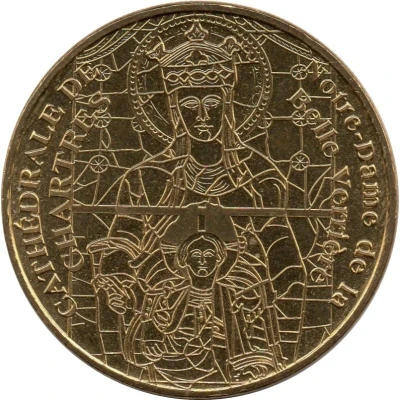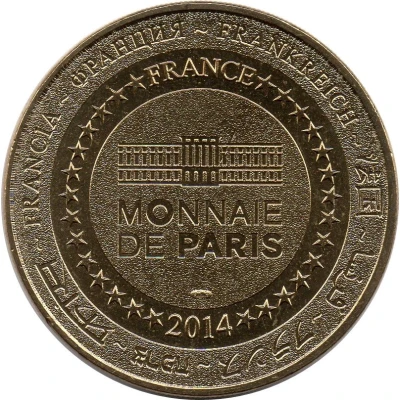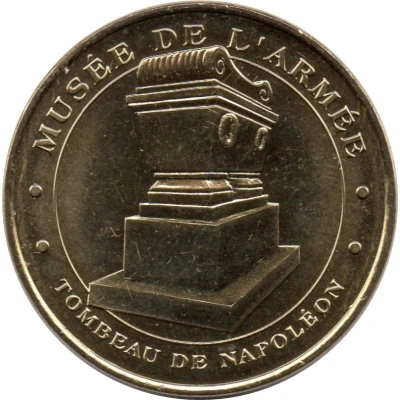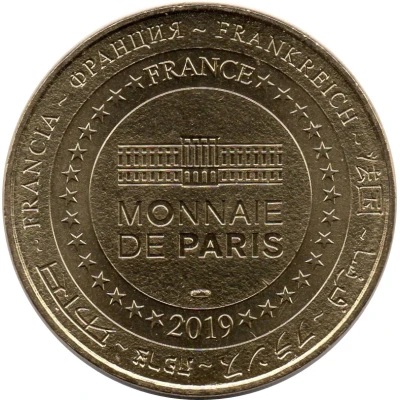
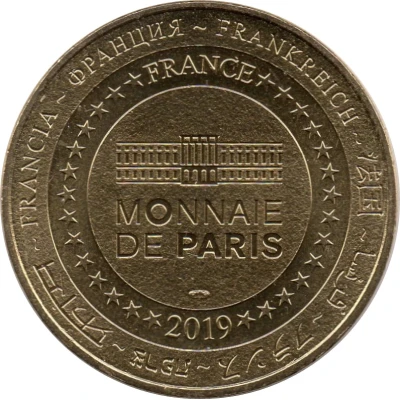

© Raoul Dusentier
Monnaie de Paris Tourist Token - Dôme des Invalides
| Nordic gold | 15.87 g | 34 mm |
| Location | France |
|---|---|
| Type | Medals › Souvenir medallions |
| Years | 2014-2019 |
| Composition | Nordic gold |
| Weight | 15.87 g |
| Diameter | 34 mm |
| Thickness | 2.5 mm |
| Shape | Round |
| Technique | Milled |
| Orientation | Medal alignment ↑↑ |
| Updated | 2024-11-12 |
| Numista | N#137662 |
|---|---|
| Rarity index | 85% |
Reverse
On the periphery the word France written eight in languages. France at 12 o'clock, 2019 at 6 o'clock, the whole linked by 14 stars on the right and on the left. In the center, the building of the Monnaie de Paris.
Lettering:
FRANCIA - Франция - FRANKREICH - 法国 - فرنسا - フランス - צרפת - फ्रांस
FRANCE
MONNAIE
DE PARIS
2019
Edge
Reeded
Comment
The ground plan of the building, by Jules Hardouin-Mansart, is simple: a Greek cross set in a square plan. Each of the exterior façades is composed of two superimposed orders, underlined by a porch topped by a triangular pediment. It is crowned by a dome surmounted by a lantern 107 metres (351 feet) high.The dome sits on a high, two-storey drum adorned with tall windows. It's at this level that the great "classical" rigor of the architecture undergoes a significant change: forms become more complex the higher up you go, from a ground-level square structure topped by triangular pediments, to complex forms where curves gradually dominate as you rise: The second floor of the drum is surrounded by buttresses that support the double stone dome inside. These buttresses, inspired by those of St. Peter's in Rome, are interspersed with high windows with curved lintels, each adorned with two geminated columns, as in the case of the between-windows, where there are no buttresses. These buttresses, of which there are eight, are not arranged regularly at the cardinal points of the edifice, but are grouped in pairs due to the location of the pillars on which they are placed, which are located inside the edifice, grouped in pairs at the four corners of the crossing, thus at an angle to the external faces of the monument. Small, typically Baroque volutes complete the buttresses at the base of the second floor of the drum, as in the church of Notre-Dame du Val-de-Grâce and the image of the Salute in Venice.
The roof dome itself, ovoid in shape and surrounded by fire pots, is covered with lead on a solid oak frame. It comprises twelve gilded compartments decorated with trophies and concealed skylights. Finally, the roof dome is topped by a tall, slender, gilded skylight reminiscent of Gothic forms. It is a square pavilion, set at an angle to the façade, with its corners decorated with columns on which statues are placed, and topped by a tapering obelisk terminating in a cross. Construction of the dome was completed in 1708, 27 years after the first stone was laid.
It was redecorated in 1807, 1830, 1839, 1937 and for the last time in 1989, requiring 12 kilos of gold on that occasion.
Inside, beneath the roof's timber-framed dome, there are two ashlar domes that make up two scenic planes. They are adorned with frescoes depicting the figures of several saints painted by Jean Jouvenet, and a huge composition by Charles de la Fosse depicting Saint Louis in his ermine coat with royal emblems (the fleur de lys) handing over his sword to Jesus Christ in person, surrounded by angel musicians.
Since 1861, under the dome and cupolas, the body of Emperor Napoleon I has been laid to rest in six successive coffins inside a red quartzite sarcophagus, in an open-air crypt dug for the purpose in the center of the building.
